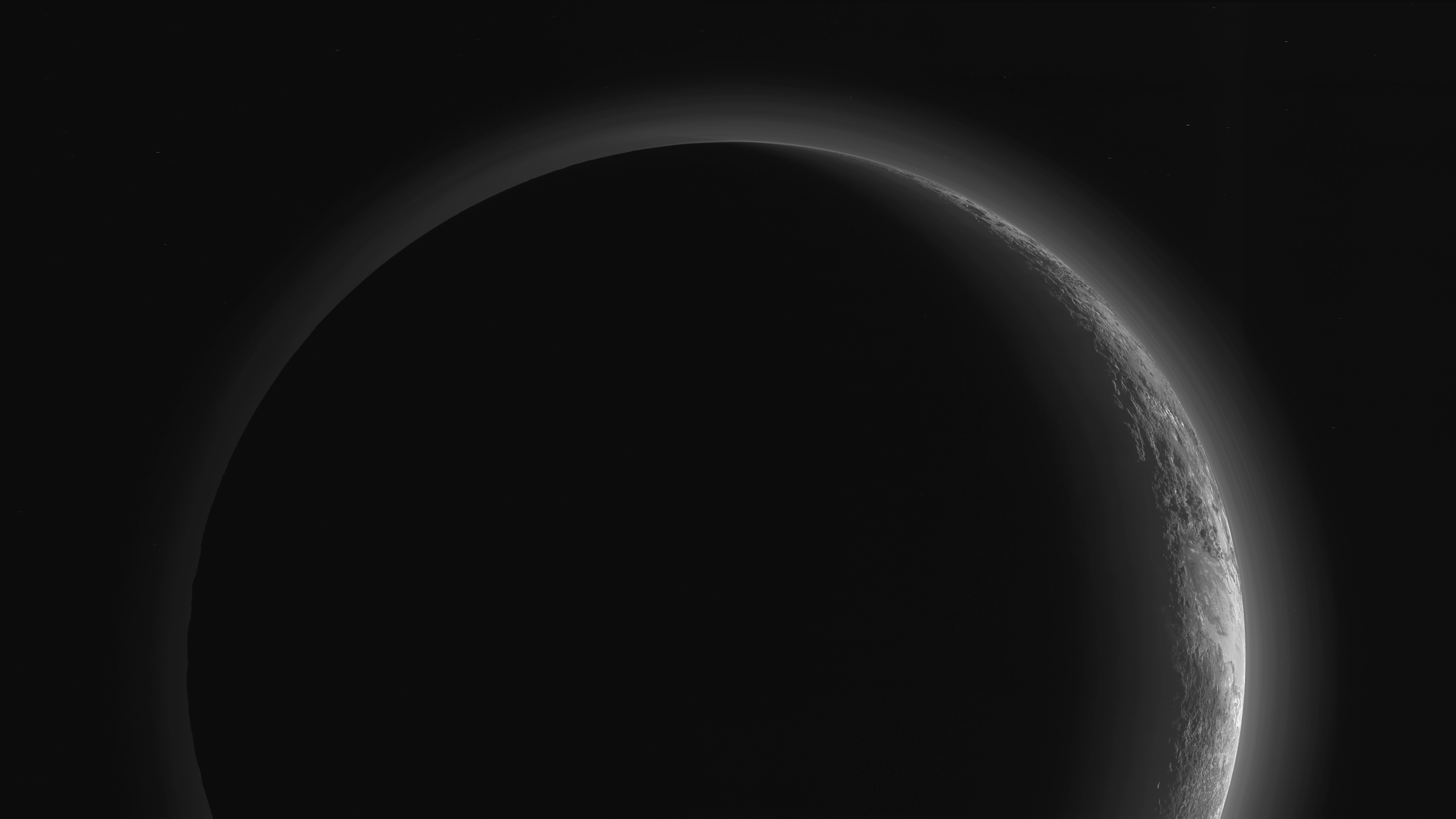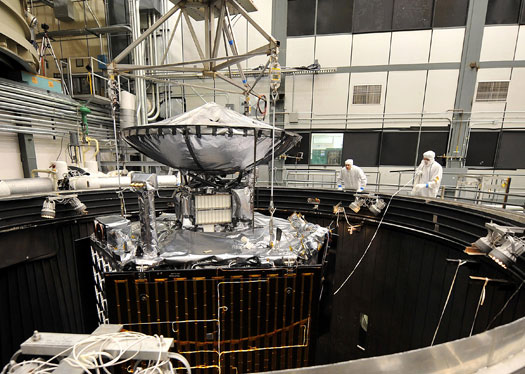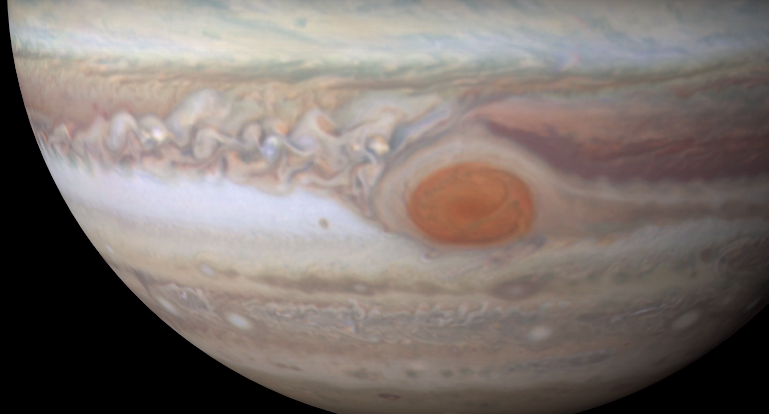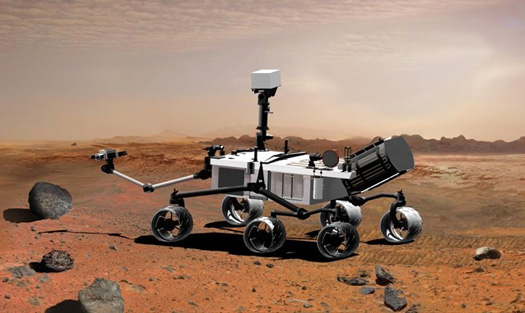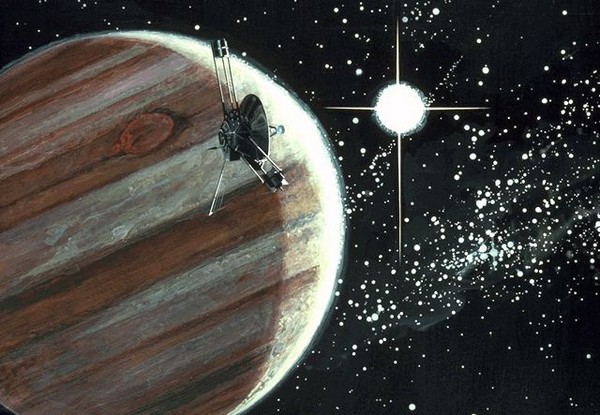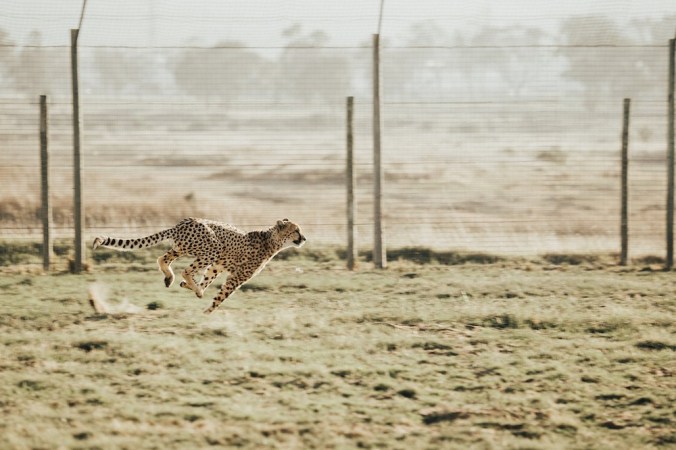

The East Coast of the United States is reeling from successive punches of massive nor’easters. But to find some truly epic back-to-back storms, you’re going to have to head more than 365 million miles away to visit Jupiter.
And no, this has nothing to do with the sadly vanishing Great Red Spot. In a paper published today in Nature, researchers described some fascinating storms recently discovered by the Juno spacecraft, which started exploring Jupiter in 2016.
That picture at the top of this article isn’t pepperoni pizza or some volcanic vortex. It shows five massive cyclones arranged neatly around a center cyclone at Jupiter’s south pole. Near the north pole, eight cyclones are similarly arranged around a central whirling vortex.

“Prior to Juno we did not know what the weather was like near Jupiter’s poles. Now, we have been able to observe the polar weather up-close every two months,” lead study author Alberto Adriani said in a statement. “Each one of the northern cyclones is almost as wide as the distance between Naples, Italy, and New York City—and the southern ones are even larger than that. They have very violent winds, reaching, in some cases, speeds as great as 220 mph. Finally, and perhaps most remarkably, they are very close together and enduring. There is nothing else like it that we know of in the solar system.”
The fact that the cyclones are arranged in polygonal shapes—an octagon and a pentagon—isn’t necessarily surprising in and of itself. Polygonal features have shown up on other gas giants, like the hexagonal jet stream around Saturn’s north pole.
“It is the combination between the general motion of the atmosphere, the rotation of the cyclones, and the rotation of the planet itself. In nature, these phenomena are often organized in geometrical pattern of different kinds,” Adriani said in an email.
But there’s something strange about these cyclones. In the seven months since the researchers started observing them, they’ve spun and raged with their high winds—but despite their close proximity to each other, they haven’t merged. And they’ve maintained a fairly steady position since observations started. The researchers aren’t sure how they manage to maintain their current whirling status, or how they got into these positions in the first place.
“We plan to continue our analysis and extend it to our spectral observations, and the observations from another Juno instrument—like the microwave radiometer on Juno that can see deeper in the atmosphere, more than infrared instruments can,” Adriani says.
That wasn’t the only result to come out of the latest Juno observations. In another paper published in Nature on Wednesday, researchers also reported that while Jupiter has a flowing core of Helium and Hydrogen, the core rotates like a solid, possibly under the influence of the planet’s magnetic field. Yet another paper took a closer look at the the planet’s asymmetric gravity field, which isn’t the same between its northern and southern hemispheres, and a fourth paper found that Jupiter’s weather patterns are far more than superficial. The researchers report that the movement of wind we observe in the cloud bands of Jupiter extends to nearly 1,900 miles into the planet.
“Galileo viewed the stripes on Jupiter more than 400 years ago,” Yohai Kaspi, lead author of the Nature paper on Jupiter’s deep weather layer, said in a statement. “Until now, we only had a superficial understanding of them and have been able to relate these stripes to cloud features along Jupiter’s jets. Now, following the Juno gravity measurements, we know how deep the jets extend and what their structure is beneath the visible clouds. It’s like going from a 2-D picture to a 3-D version in high definition.”
Not only that, but all the gases swirling around in those thick bands of wind make up about one percent of Jupiter’s mass, or roughly three times the mass of the Earth. Kaspi says that the Earth’s atmosphere makes up less than a millionth of our own planet’s mass.
We first visited Jupiter back in the 1970s, but were only able to get hurried glimpses with the Pioneer and Voyager spacecrafts. We returned for a longer look with Galileo in the 1990s and early 2000s, but Juno is the first spacecraft to enter polar orbit, and the first to take an image of the planet’s north pole. It will gather more data on it’s next close flyby, which is currently scheduled for April.
Jupiter is a giant and familiar world to us all, but these new observations show that there’s a lot more to this planetary leviathan than meets the eye.

